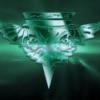Sign in to follow this
Followers
0

NASA Scientist finds proof of alien life
By
Tyralak, in Vulcan Science Academy

By
Tyralak, in Vulcan Science Academy